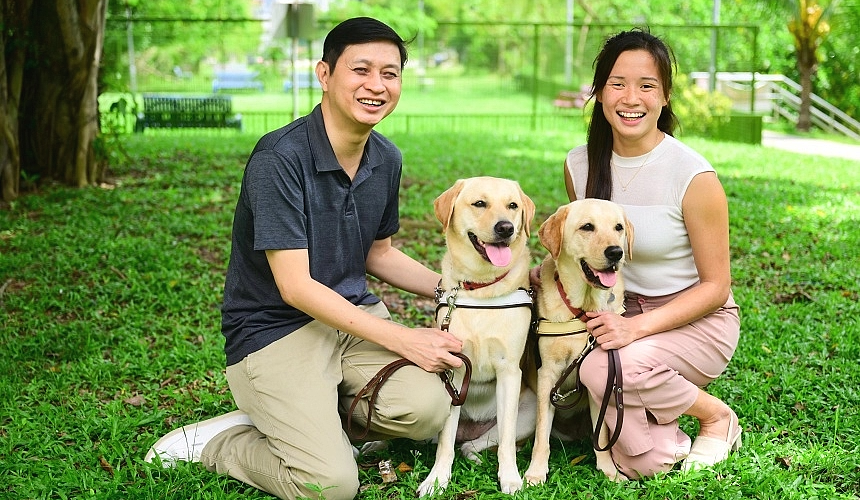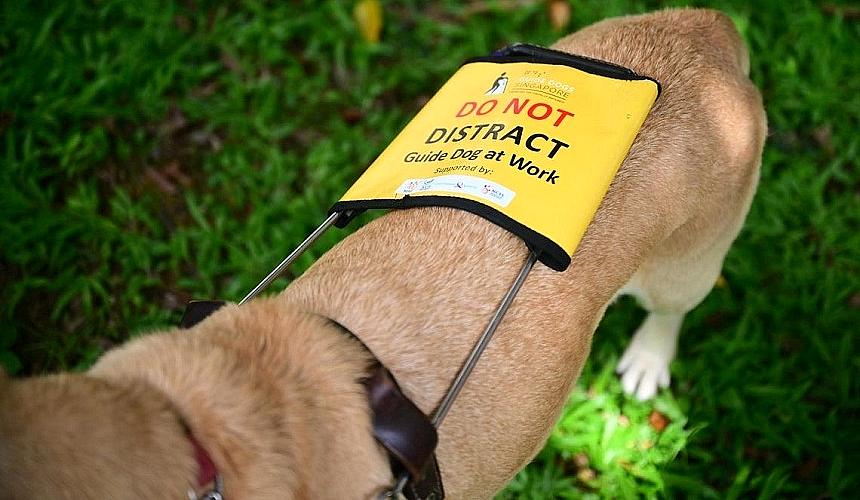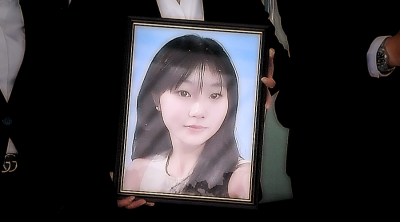
SINGAPORE: When he took his guide dog into a popular fast-food restaurant recently, former fintech professional Sebastian Quek was told by a customer that no pets were allowed.
When the 49-year-old with end-stage glaucoma explained that Vogue was a guide dog, the customer insisted that he leave the premises because “its fur will fly around”.
This was one of many instances of rejection that those with visual impairments face daily, and something that organisations working with the blind community here are hoping to change ahead of International White Cane Day.
The annual event, marked on Oct 15, seeks to raise awareness of aids that blind people use to travel independently, such as canes and guide dogs.
Quek noted that private-hire drivers had driven away when they spotted Vogue, and his table reservations at restaurants often got turned down when he made it known that his guide dog would be with him.
“I get rejected up to 70 per cent of the time when visiting new places. I needed to explain that guide dogs are allowed by law, and they are well-trained and well-behaved, but I still got turned away often,” he said.
Guide dogs, which wear working harnesses indicating that they are working dogs, are allowed on public transport and at food establishments, including halal-certified restaurants and hawker centres.
There are also people who would try to lure Vogue away by whistling at her, even when Quek is crossing the road. Such distractions can compromise her focus, putting both dog and handler at risk.
Using a white cane is no easy task either, especially when navigating crowded places.
“Nowadays, many people are glued to their phones, so they don’t really see me,” he said.
“The few who offer me a seat in public transport would just walk away from their seat without informing me, when I cannot see.”
Guide Dogs Singapore (GDS), a social service agency formed in 2006, is celebrating White Cane Day on Oct 27 from 10 a.m. to 8 p.m. at The Star Vista by showcasing the resilience of people with blindness and raising awareness of guide dogs and assistive technologies, as well as its rehabilitative training for the visually impaired.
The free event is open to the public.
Rehabilitative training by GDS helps the visually impaired gain the skills and techniques needed to live independently, travel confidently, and stay connected with loved ones.
This includes orientation and mobility training, which helps them navigate their environments safely, independent living skills training for daily tasks, an accessibility and technology programme that teaches the use of technological devices, and the guide dog programme.
GDS also conducts outreach talks and staff training in schools and companies to promote inclusivity for the visually impaired.
More than 40,000 people in Singapore are living with blindness or vision impairment, GDS estimates, and this number is expected to rise with an ageing population and longer lifespans.
Eye conditions that lead to vision loss, such as diabetic retinopathy and cataracts, are becoming more common as people live longer and develop chronic health conditions.
Eileen Koh, GDS’ head of community partnership, said Singapore has made great strides in improving accessibility for people with disabilities, including those with vision impairment, with features like tactile paving and audible signals to make commuting easier and safer.
“However, public understanding of vision impairment remains limited, and misconceptions about blindness are still widespread,” said Koh.
“By promoting more social interaction and integration between visually impaired individuals and the sighted community, we can break down barriers and move towards a truly inclusive and accessible society.”
GDS has successfully trained and paired 13 guide dogs with their handlers since its founding, with the dog provided free of charge. It is the only local organisation offering this service.
Its guide dog mobility instructor can train up to two dogs a year, and it can take up to two years for a dog to be fully trained to safely guide its handler.
Training each dog costs S$45,000 to S$50,000 (RM148,000 to RM164,000), from its specialised training to veterinary care.
Interest in guide dogs is growing among the visually impaired, with six people currently on the waiting list.
However, others are discouraged from getting one as access challenges persist in Singapore and there is still hesitation at many public places over allowing in guide dogs despite the legal provisions.
Paralympic swimmer Sophie Soon, 27, often gets chased out by store staff and mall security when she is with her guide dog Orinda.
“Our main struggle is public acceptance, and true acceptance happens when we can just blend in and not stick out like a sore thumb,” she said.
The Singapore Association of the Visually Handicapped (SAVH) signed a memorandum of understanding with Gardens by the Bay on Oct 13 in conjunction with its White Cane Day celebrations.
This will see specially curated tours organised for the visually impaired, and sensory gardens that allow them to explore the environment through touch and smell.
SAVH executive director Mohamad Faiz Selamat said: “This partnership is a significant step towards fostering inclusivity and accessibility in Singapore’s most iconic public spaces.
By collaborating with Gardens by the Bay, we are ensuring that the visually impaired community can enjoy these beautiful spaces on equal terms.”
At the same event, SAVH gave out the Tan Chay Bing Bursary Awards to recognise 27 visually impaired students who have demonstrated outstanding academic performance, with $55,600 awarded in all.
Dallon Au, one of the recipients, said having more public awareness will be good for both the visually impaired and the general public.
This can be done through talks and events such as those organised by SAVH and GDS, he said.
The 24-year-old computing science undergraduate from the Singapore Institute of Technology uses a white cane as a mobility aid.
“Most Singaporeans are nicer compared with 10 years ago, but may lack the know-how to help,” he said.
“For example, they will pull me by the back or arm when they think I am lost or in danger, and I would ask if I can hold their elbow instead.”

ADVERTISEMENT
ADVERTISEMENT








































